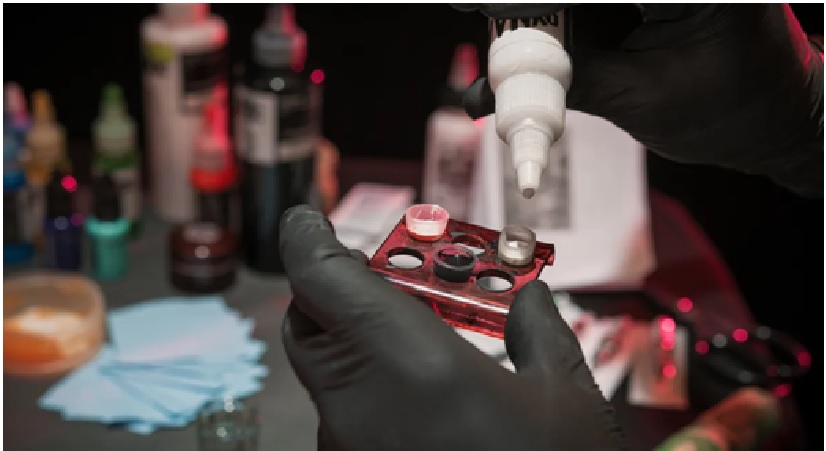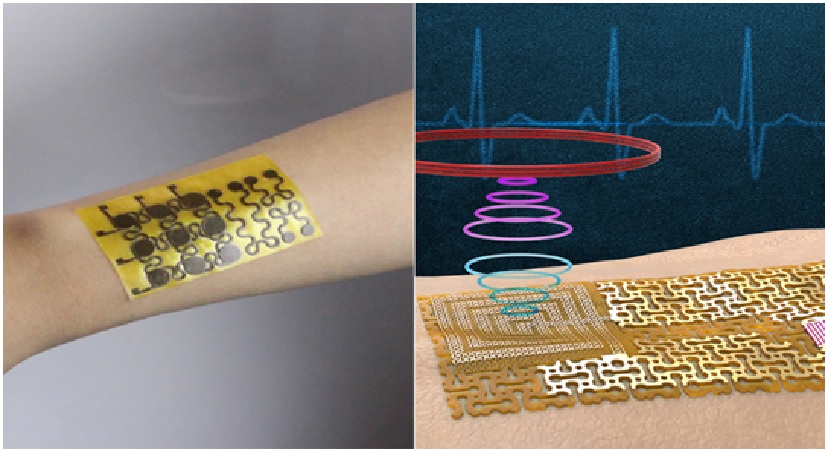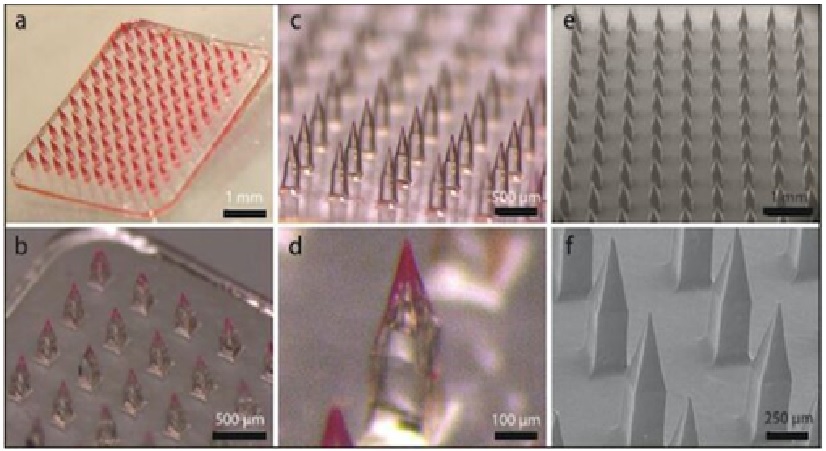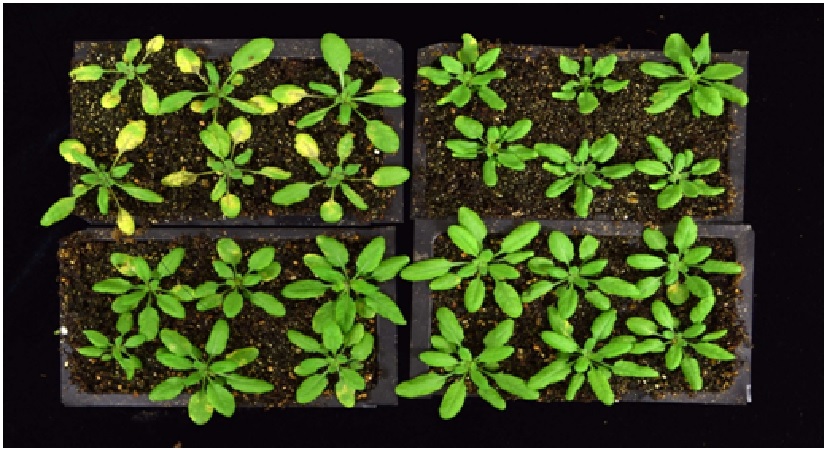Biomaterial Ink for 3D Printable Bioelectronics includes Tattoos
The team, Kaivalya Deo, the Department of Biomedical Engineering and in collaboration with Dr. Anthony Giseppi-Ely, Tri-County Technical College in South Carolina, and Dr. Limay Tian, Biomedical Engineering at Texas A&M, researchers, has developed a new class of biomaterial inks with 3D printing that mimic human tissue, just like skin.

Figure 1: Biomaterial inks with 3D printing for bioelectronics.
Figure 1 shows that3D printed devices are extremely resilient and can be squeezed, bent or twisted without breaking. In addition, these devices are electronically active, which allows them to track human dynamic movement and paves the way for continuous motion monitoring. A provisional patent for this technology was filed with the Texas A&M Engineering Experiment Station. [1]
This biomaterial ink leverages a new class of 2D nanomaterials known as molybdenum disulfide (MoS2). The thin-layered structure of MoS2 contains defect centers to make it chemically active and, combined with modified gelatin to obtain a flexible hydrogel, comparable to the structure of Jell-O.
The ink has shear-thinning properties that decrease in viscosity as force increases, so it is solid inside the tube but flows more like a liquid when squeezed, similar to ketchup or toothpaste. The team incorporated these electrically conductive nanomaterials within a modified gelatin to make a hydrogel ink with characteristics that are essential for designing ink conducive to 3D printing. [2]
In order to 3D print the ink, researchers in the Gaharwar Laboratory designed a cost-effective, open-source, multi-head 3D bioprinter that is fully functional and customizable, running on open-source tools and freeware. This also allows any researcher to build 3D bioprinters tailored to fit their own research needs.
The electrically conductive 3D-printed hydrogel ink can create complex 3D circuits and is not limited to planar designs, allowing researchers to make customizable bioelectronics tailored to patient-specific requirements.
In utilizing these 3D printers, Deo was able to print electrically active and stretchable electronic devices. These devices demonstrate extraordinary strain-sensing capabilities and can be used for engineering customizable monitoring systems. This also opens up new possibilities for designing stretchable sensors with integrated microelectronic components.
One of the potential applications of the new ink is in 3D printing electronic tattoos for patients with Parkinson’s disease. Researchers envision that this printed e-tattoo can monitor a patient’s movement, including tremors. [3]
References:
- https://journalbreak.com/newly-3d-print-produced-ink-may-be-used-as-a-tattoo-study-says/
- https://www.sciencedaily.com/releases/2022/08/220818122145.htm
- https://www.eurekalert.org/news-releases/962260
Cite this article:
Sri Vasagi K (2022), Biomaterial Ink for 3D Printable Bioelectronics includes Tattoos, AnaTechMaz, pp.98















